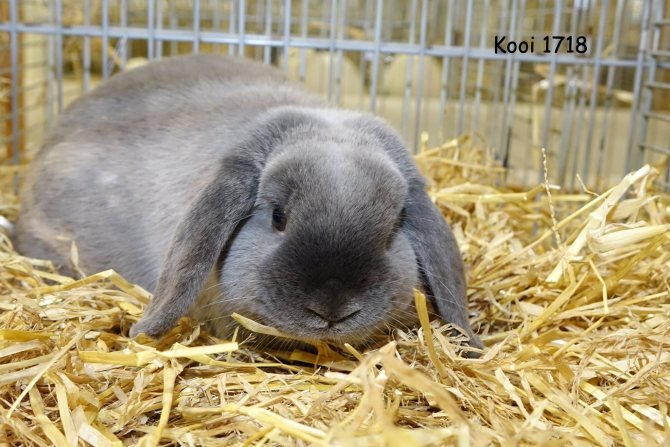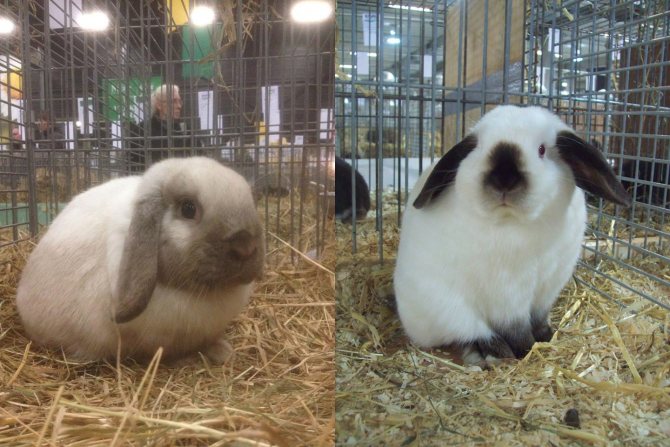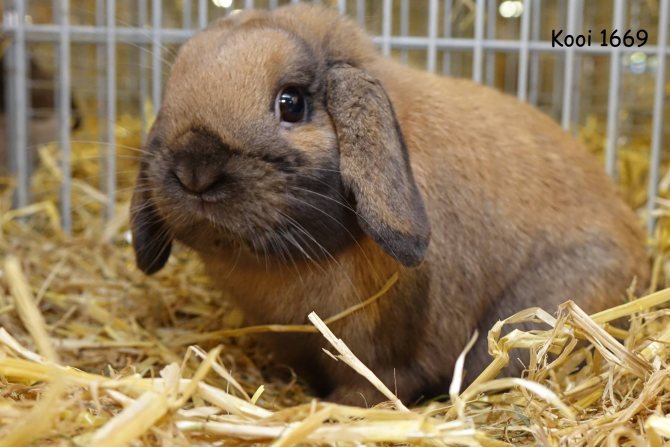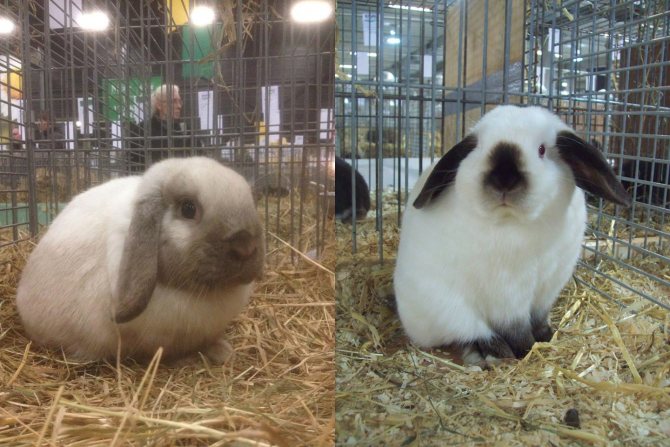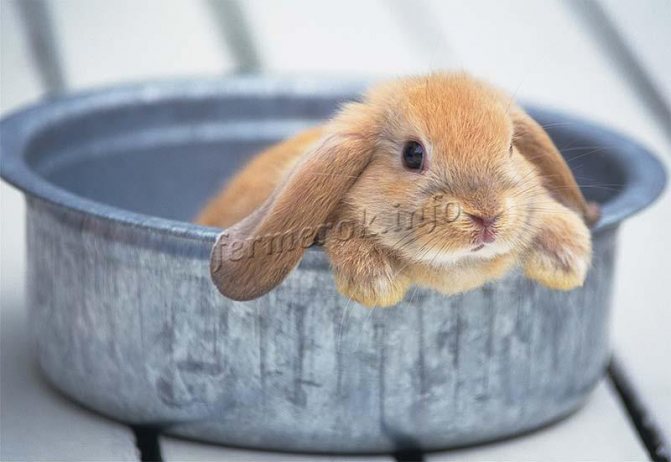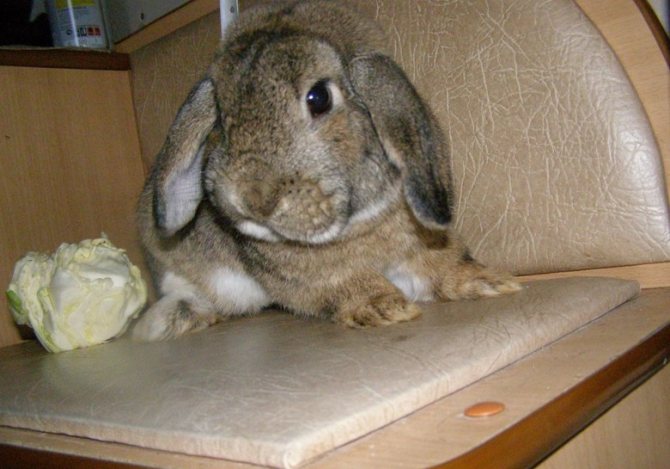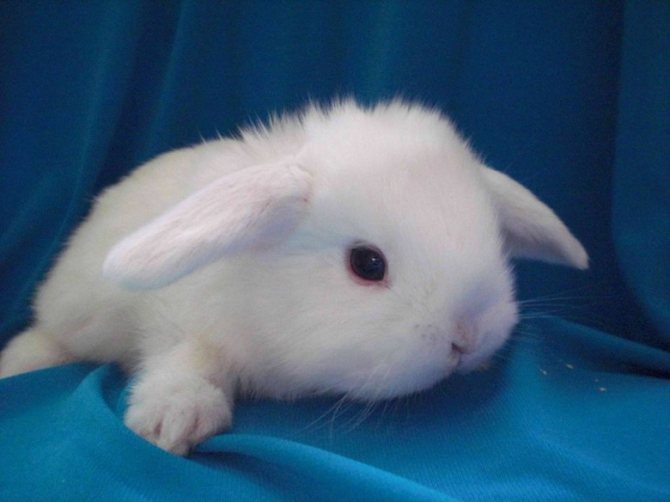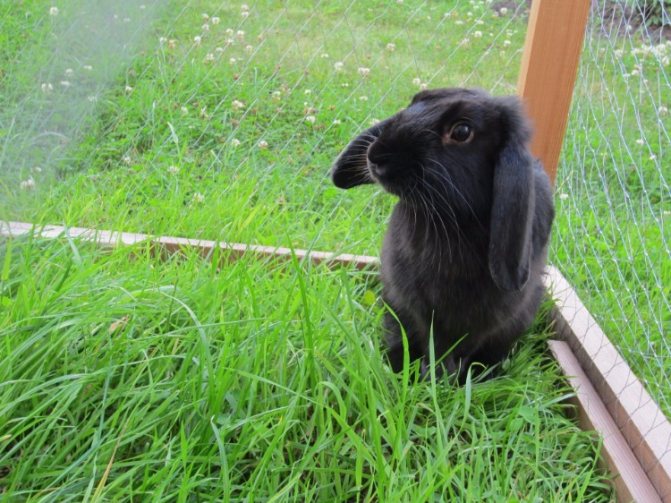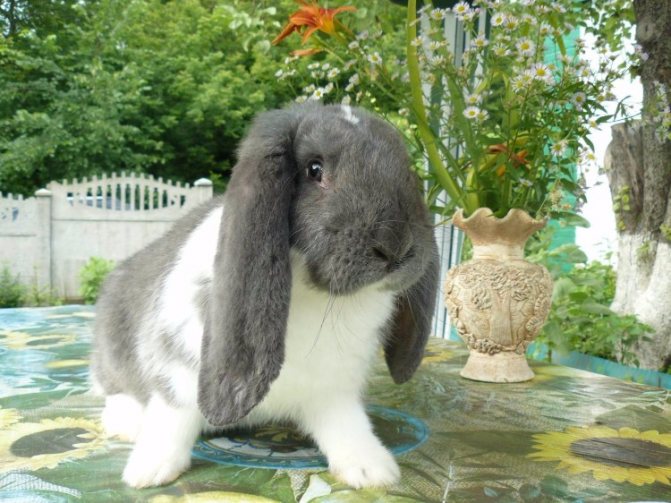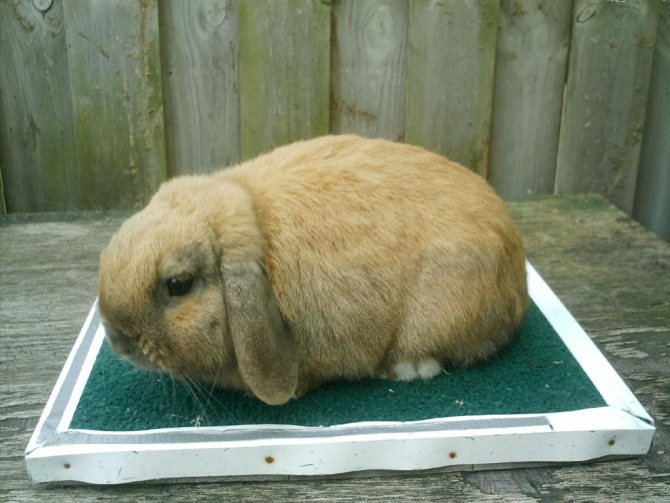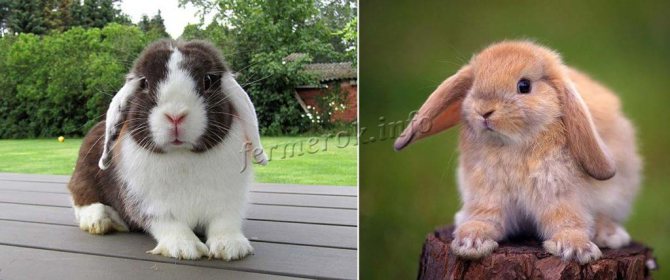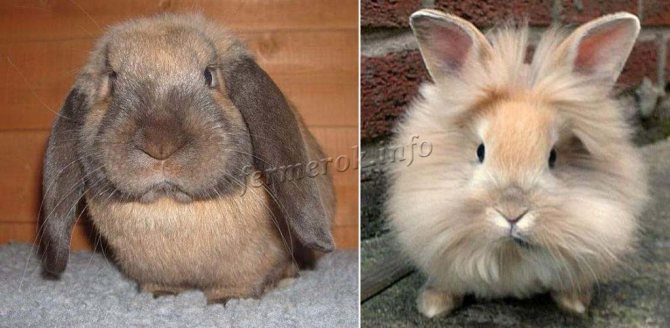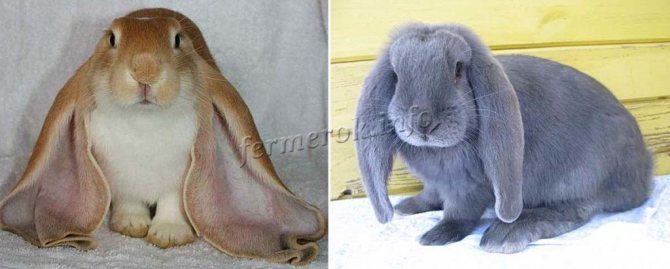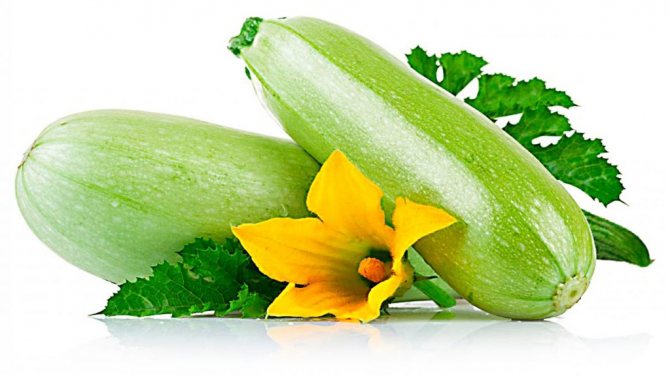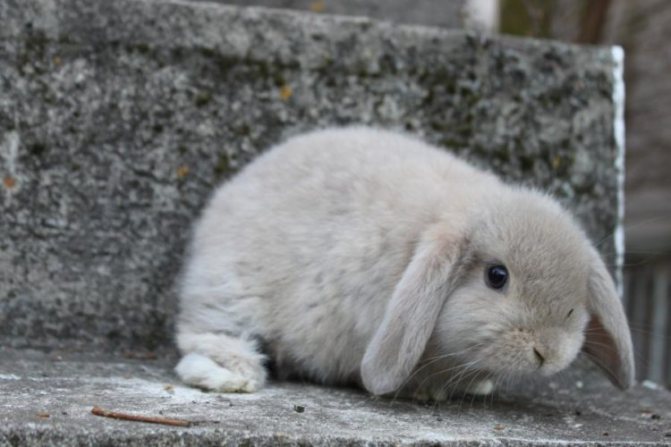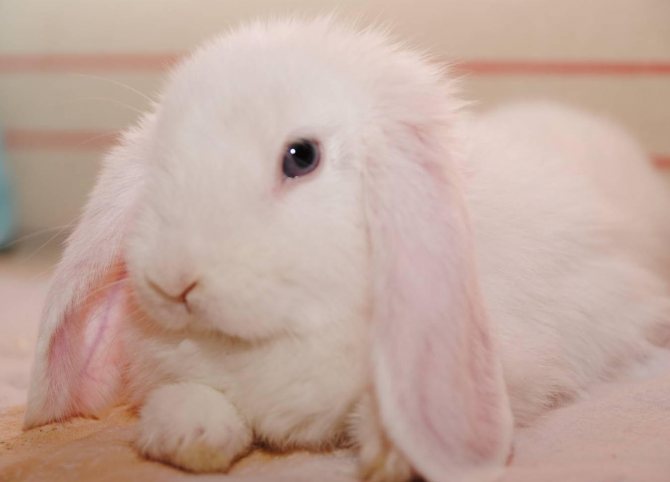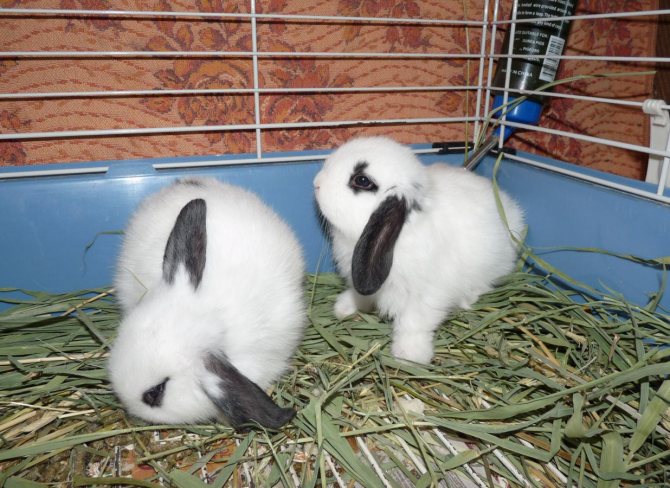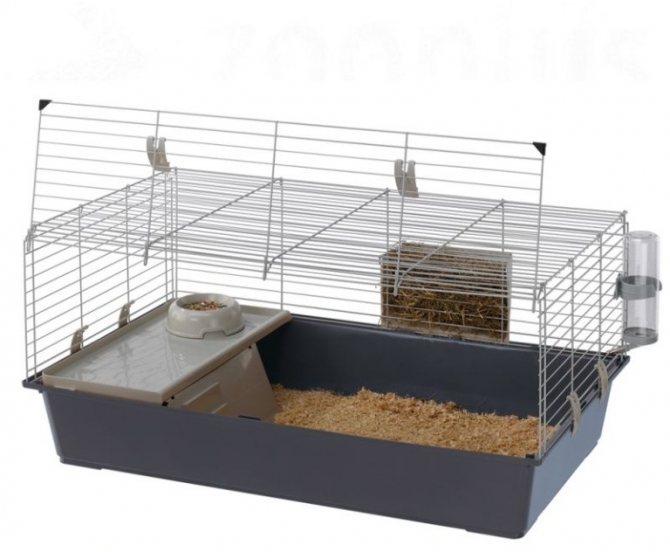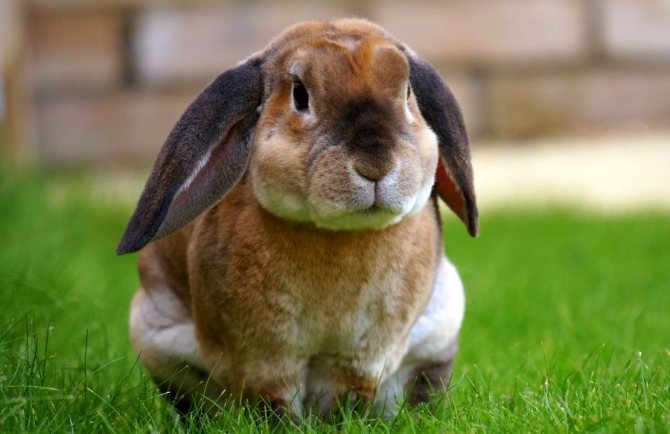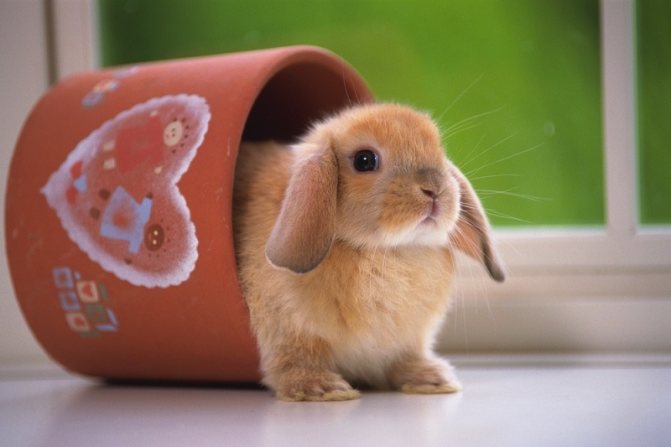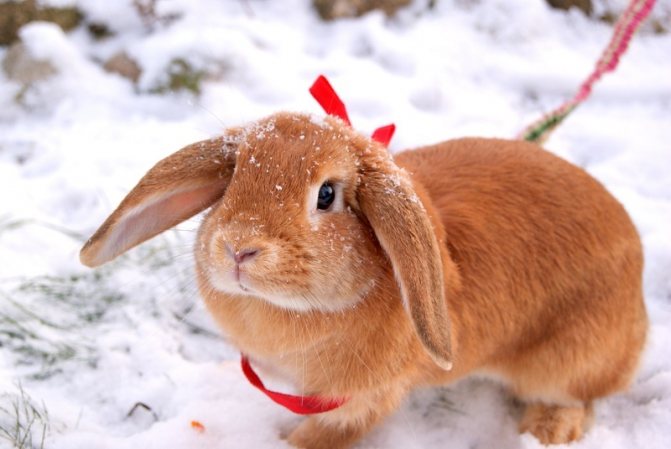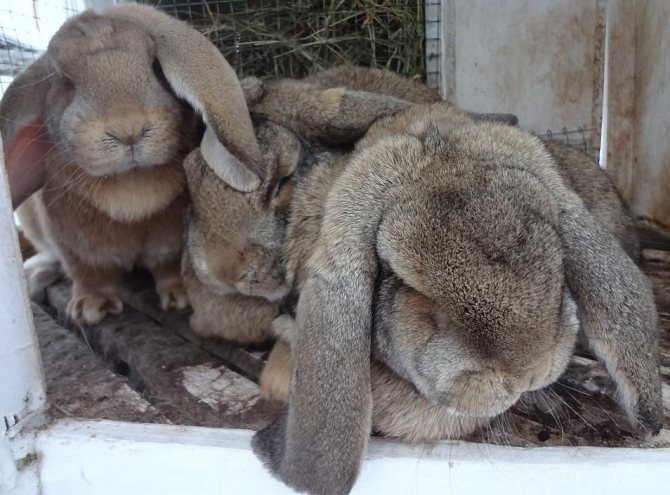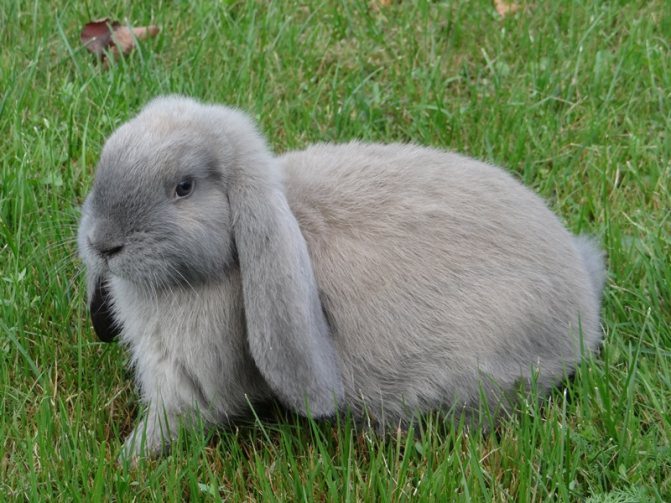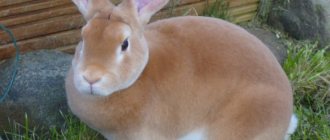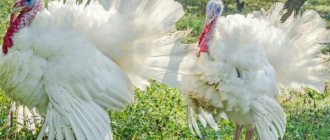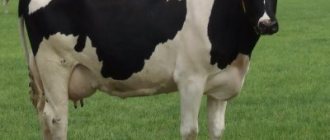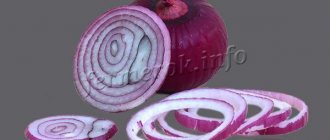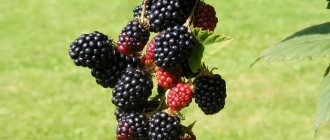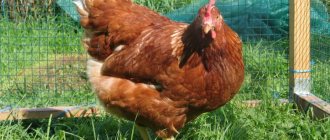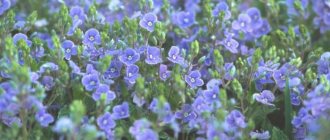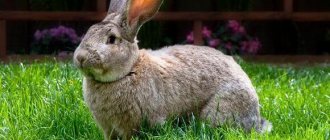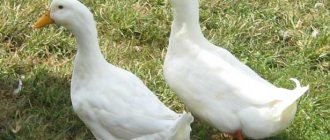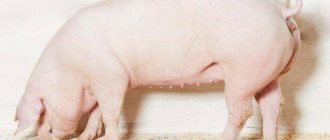»About rabbit breeding» Rabbit breeds »French sheep rabbit
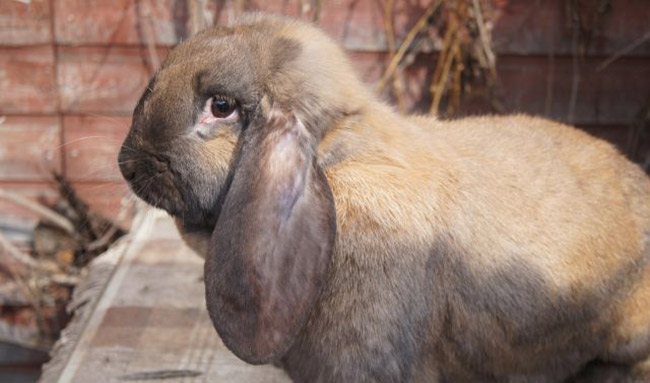
There are a great many varieties of rabbits that live on our planet, but among them there is one species that deserves special attention. We are talking about a ram rabbit with a special gene that makes the ears hang and does not allow them to be located in a vertical plane.
Characteristics of the breed
The Lop-eared ram breed belongs to the decorative direction in rabbit breeding. Distinctive features of this breed are long drooping ears, a large head, a wide forehead, topped with a kind of "crown" formed by several accrete cartilages, and a curved nose. The general drawing of the head resembles a lamb's shape, hence the name of the breed.
For rabbits, rams are characterized by a wide chest and a massive, elongated back, as well as long thick wool of various colors: white, gray, silver, brown, black. In some eared ones, it has a bluish or golden hue. Cases of spotted color are not uncommon in this breed.
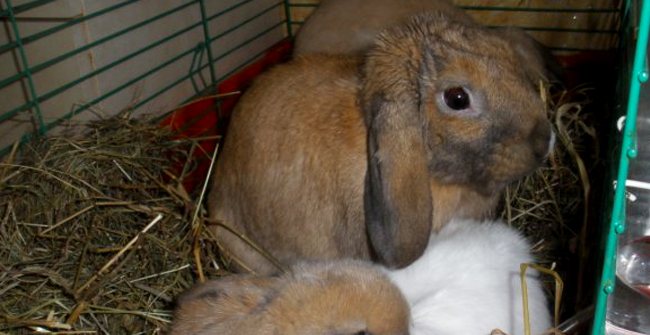

The ears of rams are long and wide, in some individuals they can grow up to 71 cm in length and 15-17 cm in width.In the natural position, ears of this length prevent the animals from moving freely, therefore many rabbit breeders clamp their ears behind the animal's back with a special clip.
Animals of this breed differ from their relatives by a calm and docile disposition, and besides, they are not shy. But the innate courage has nothing to do with it - because of the long hanging ears, they simply do not hear well, therefore they are not frightened.
Among the decorative rabbit breeds, the ram is a real giant. Some sources attribute the English, German and French subspecies not even to the decorative, but to the meat-skin direction. On average, the weight of an adult animal is about 4 kg, although some champions can grow over 10 kg. The sheep meat is tender, juicy, of excellent taste, the fur is long, silky to the touch.
Their large size and decent weight make their breeding not only entertaining, but also a profitable business, since both meat and fur are invariably in demand.
The disadvantages of this breed can be attributed to the small fertility of females: for 1 okrol, they lead on average 5-7 rabbits. Also, rams are susceptible to viral infections, so it is undesirable to keep them next to other breeds. And although the eared of this breed does not need special care, timely preventive vaccinations are mandatory for them.
Breeding
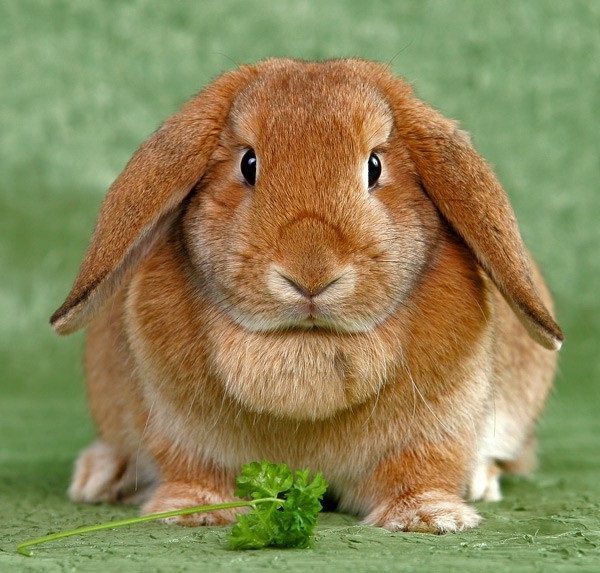

Breeding dwarf fold-eared rabbits is easy. From 6 months of age, rabbits can reproduce peacefully. Lop-eared rams do not differ in fertility. The female bears the rabbits for 28-36 days. With proper care, rabbits can bring 6-7 rabbits in one litter.
The pregnant rabbit needs to be provided with maximum care. It is necessary to monitor the purity of the cage, to give the animal more nutritious food rich in proteins.
Fresh clean water is important for the female, it is recommended to give low-fat homemade cottage cheese and a hard-boiled egg once a day. In order for the rabbit to feed her cubs for a long time, you need to disturb the animal less.
Sterilization and castration
The ram-rabbit at the onset of puberty begins to mark the territory, becomes restless and restless. Games with children cease to interest the eared.
For females, sterilization is the solution, and for males, castration. The ram after the operation becomes peaceful and calm. He sleeps well, takes an interest in games again and shows a healthy appetite.
Beginning at 4 months of age, females can be sterilized, but, according to many veterinarians, it is better to postpone the operation until 6 months of age, when the animal's body becomes stronger and more mature and after the operation it recovers faster.
The best age for male castration is 3.5-5 months. Experts do not give an unambiguous answer whether it is possible to operate on individuals that have reached the age of 1-3 years. Most are inclined to believe that the operation is much more difficult for pets in this case. Before carrying out it, it is imperative to pass all the necessary tests and check the condition of the internal organs.
Subspecies of rabbits, lop-eared rams
The base breed was bred in England. Its ancestors were wild rabbits, in which, due to gene mutations, disproportionately large ears grew. Over time, breeders have consolidated these differences, not only breeding a new breed, but also founding a whole direction in rabbit breeding. Today, the fold sheep breed has several subspecies:
- English;
- German;
- French;
- Dutch;
- nappy;
- plush;
- Meissen;
- dwarf.
The average weight of an English ram is 4.5-5 kg. He has the longest ears among all ram subspecies. The rabbit of this subspecies is listed in the Guinness Book of Records as the owner of the longest ears in the world - 79 cm.
The English subspecies is distinguished by a meek, friendly disposition. The animals quickly get used to their owners and remember their voices and their nicknames. It is noticed that if you look after them in silence, they run wild and become shy.
A subspecies of the French lop-eared ram was bred in the middle of the 19th century in England. The “fathers” of the breed were the fold-eared rabbit and the German giant rabbit. The French subspecies is distinguished by significant weight variations - from 4 to 8 kg, and its rapid gain. It is considered the calmest environment of all lamb subspecies.
Distinctive features of the subspecies are considered a massive torso, a large head with a wide forehead and cheeks - "pampushki". It also differs in a wide range of colors, but usually the color of the rabbit coincides with the color of one of the parents.
German rabbits rams are descendants of the French, crossed with another rabbit breed - Flanders. The animals grow from 5 to 9 kg and have relatively small (by "ram" standards) ears - only up to 45 cm.


The German subspecies has a stocky body and an overly broad forehead. The neck of these animals is so weakly expressed that initially it seems as if their head grows directly from the body. It can also be recognized by its wide, fleshy ears, rounded at the ends. The German subspecies is the most promising among sheep for growing for meat.
Meissen subspecies, among other large rams, is distinguished by proportionality and even grace of forms. The subspecies was bred by crossing French and German rams. The weight of adults is from 3 to 5 kg. It is appreciated for its extremely thick and even coat of various, but always monochromatic, colors. In the first half of the 20th century, the Meissen subspecies was quite popular, but now its population is on the verge of extinction. In Germany, this subspecies is taken under state protection.
Plush Sheep - Newly bred by crossing Rex and pygmy rams. This subspecies does not yet have pronounced distinctive features. The weight of an adult animal is 2-3 kg. Prized for its thick, soft, ivy-like coat.
Dwarf rams were bred in Holland in 1950 as an ornamental species of rabbits. The weight of adult eared ears of this subspecies is only 1.2-2 kg, but the ears grow up to 26 cm in length. Due to its diminutive size and low weight, this subspecies often has only one ear lowered. Dwarf rams quickly get used to their owners, remember their nickname and willingly respond to it.
The Dutch lop-eared ram is the smallest among the rabbits of rams. It weighs only 1.3 -1.8 kg. Rabbits of this subspecies inevitably become favorites of the whole family, but especially small children become attached to them, to whom the rabbit quickly reciprocates.
The fleecy lop-eared ram is another recently bred decorative subspecies, the ancestor of which is the Dutch ram rabbit. The weight of adults is 1.6-1.8 kg. It has long fluffy fur and is considered the champion among this breed for the number of wool shades - up to 20 different colors.
general information
The breed appeared at the end of the 19th century. British scientists engaged in breeding work drew attention to a strange mutation of one of the rabbits. The individual had long drooping ears. This attracted breeders who started breeding a new breed. Large meat-skin rabbits took part in the experiments. The work ended with the creation of a new variety of rabbits.
Note! At first glance, the animal's full face looks like a ram. Wide cheeks, sloping forehead, narrowed-rounded eyes, a slightly humped nose, a massive torso and a fluffy warm fur coat. Because of this, the animal was called a ram. Another name for the breed is the lop-eared ram.
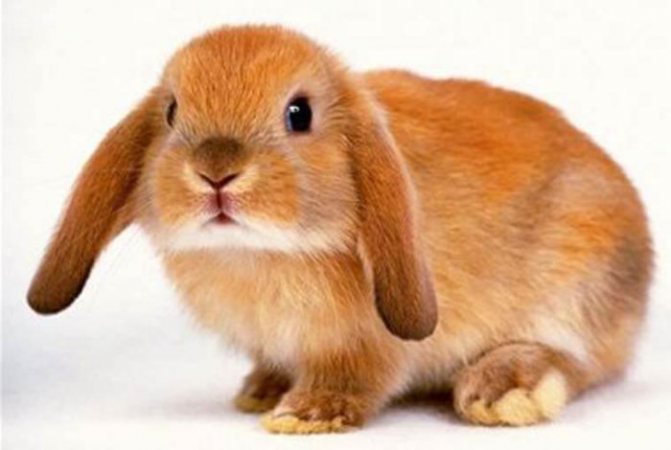

Rabbit ram
Rabbits with long ears have attracted the fancy of the inhabitants of Europe and the Mediterranean countries. In the 20th century, breeders from different cities were engaged in improving the variety. As a result, a whole group of sheep representatives was created, among them:
- English;
- German;
- Dwarf;
- Nappy;
- French, etc.
The English breed is the ancestor of the entire group. These animals are distinguished not only by long ears, but also by short forelimbs. The animal quickly gets used to its owner. The breed is suitable for keeping in an apartment.
The German ram rabbit is the giant of all lop-eared rams. Its average weight is 9 kg.
The dwarf representative is bred as a pet, which is an alternative to the cat. He has excellent body proportions and looks like a soft toy.
Growing a fuzzy pet means staying in the comfort of an apartment. These domestic animals have increased fluffiness, they have a tousled soft coat. In size, they resemble dwarf ones.
The French rabbit is the most attractive animal for aviary breeding. The breed is meat. From the Frenchman, the German breed of giant rabbits was bred. The French themselves also grow to an impressive size. In addition, the animals have a particularly fluffy and soft skin. Rabbit French ram whose breed description includes large sizes, is valued for its very fast weight gain.
Features of caring for rabbits with rams
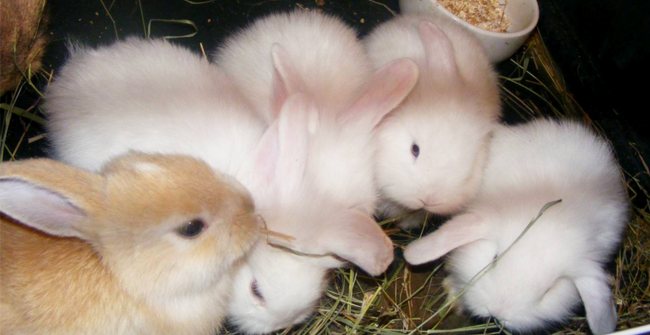

The ram rabbit is unpretentious, quickly gets used to new conditions and becomes attached to the owners, so caring for them is simple and not burdensome. The physiological features of the structure of lop-eared rabbits dictate the peculiarities of caring for this breed.
Long, drooping ears make it difficult for them to move in tight cages, so houses for fold rabbits should be large and spacious.
For lop-eared rabbits, regular brushing and cleaning of the ears is important. For the rest, caring for lop-eared rams is the same as for other breeds of rabbits.
It is better to make wooden cages for them.Keeping them in them requires more effort than in metal mesh cages - wooden cages need to be cleaned regularly and disinfected several times a season, but the eared animals will live much more comfortably. Especially large subspecies, in which, due to the large weight, the legs have a large load, therefore, in metal mesh cages, they often injure them.
Sheep rabbits - care
Caring for such pets does not differ from the norms of keeping other eared fellow tribesmen. A dangling ram is a decorative rabbit, caring for it consists in observing hygiene, external examination, if it is fluffy, you need to comb it out more often. Pets are extremely clean, take care of their own hair, they do not need to be washed, only in extreme situations (for example, with diarrhea).
Rodents easily get used to the tray. In terms of cleaning, you need to clean their toilet daily and renew the bedding in the house twice a week. If you follow these rules, there will be no unpleasant smell in the apartment from the pet. Lamb needs to be examined and their ears cleaned. Another important grooming procedure is claw trimming. This is done a couple of times a year with special forceps. At 45 days, at 4.5 months and then every six months, pets must be vaccinated with a myxomatosis vaccine.
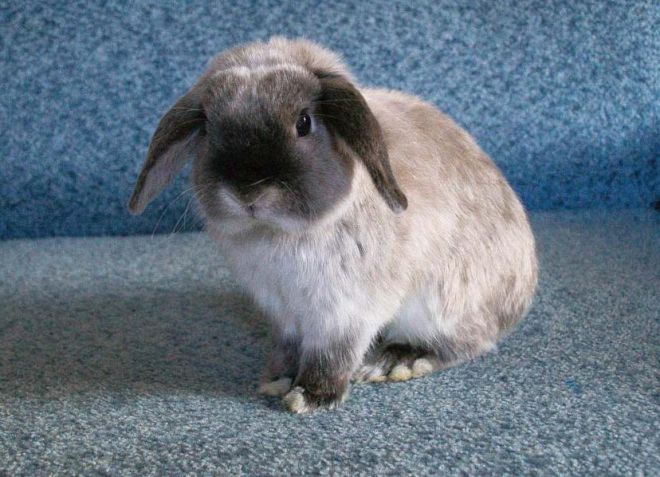

History of the breed
The name of the breed appeared due to the special shape of the muzzle and the position of the ears. The head of rabbits of this breed really resembles the head of a ram in shape, and the ears drooping downward complete this resemblance. The first representatives of the sheep breed appeared in the early 19th century in England and were considered an unwanted mutation in a number of local widespread rabbits.
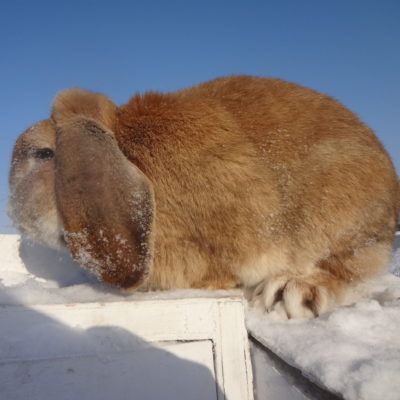

The shape of the head of the individual resembles the head of a ram.
External changes did not harm productivity, and over time, amateurs and breeders tried to consolidate this feature in order to obtain an independent breed. Their work was crowned with success, and the signs of mutation were fixed and made inheritable. Today, representatives of the sheep breed are the longest-eared rabbits in the world. In elite individuals, ears reach a length of 70 cm.
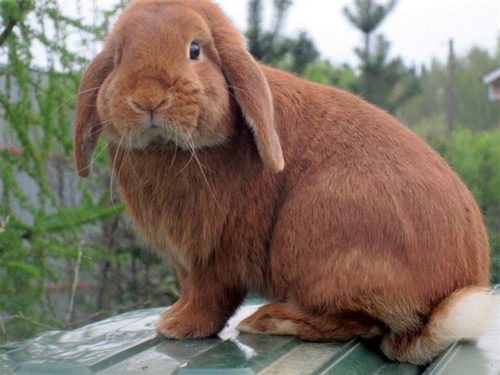

Long ears are one of the hallmarks of the breed's elite.
At the end of the 19th century, the breed ended up in France, where it was crossed with Belgian giants (Flanders) and Norman rabbits. As a result of these works, French breeders bred their own sheep. The French ram rabbit has shorter ears that only grow up to 40 cm.


Rabbits of the Ram breed
There is also a German line of rams, bred in parallel with the English in 1850. To obtain it, the Flemish giants and English fold rabbits were crossed. Due to the fact that targeted breeding work was carried out in the country to breed this breed, it is most often Germany that is recognized as the homeland of rams as a separately existing breed.
Reproduction
French rams deserve good reviews from farmers, including for their fertility. It will not be difficult to increase the number of such animals on the farm. Representatives of this breed reproduce quickly enough. The breeding mating is carried out in a rabbit cage. The offspring of a female French ram is hatching for a rather long time - 30-32 days. In most cases, a rabbit gives birth to 6-7 cubs.
Unfortunately, no more than 10 babies can feed a female of this breed. If suddenly more of them are born, she will gnaw the "extra" ones herself or throw them out of the nest. To prevent this from happening, the owner of the courtyard should try to check the mother plant immediately after the okrol. If there are more than 10 cubs, 2-3 will have to be planted by some other newly born female.
External features and character
Representatives of all varieties of the sheep breed have thick fur, which is distinguished by its density and softness. The colors of the animals are different. Breeding the breed is somewhat complicated by its low fertility.
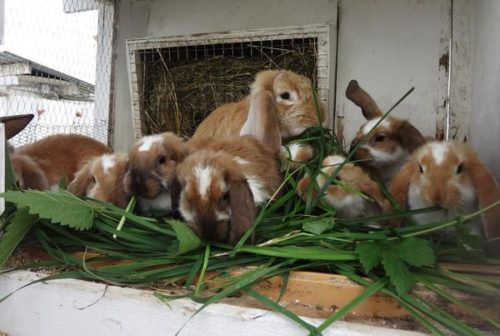

Sheep are not fertile rabbits.
The characteristic of addition is similar in different species. Breeds differ only in the length of the body and ears. The body of rabbits is elongated and very strong. The largest individuals have its length up to 70 cm. The back is slightly sagging wide. The rabbit's rump is round and the chest is deep.
The paws of the animal are of medium length, strong, with well-developed muscles. The head is large with well-defined cheeks and a steep forehead, which creates the resemblance to rams. Densely downy drooping ears complement the resemblance.
The character of this breed of rabbits is pleasant and sociable. They get used to their master and quickly begin to recognize him. Animals are not inclined to bite and strike with their hind legs, which is why children can be allowed to play with it without fear, but only if they do not hurt the ram, since the animal can stand up for itself if necessary.
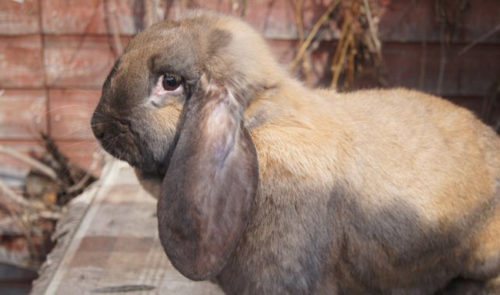

Sheep are friendly and sociable
The description of the breed largely depends on which species we are talking about.
Today, breeders have bred various types of rams. Depending on the purpose for which the animal is purchased, one or another species is chosen.
English
The breed of rabbits is the rarest, since, due to the gigantic length of the ears, they require large areas. Without this, the pet will step on its ears, which is fraught with dangerous injuries. The hind legs of animals are much longer than the front legs, and therefore, when the pet is sitting, the effect is that the rabbit's croup is much higher than the front of the body. The hair of the animals is short and very dense. The colors are very varied.
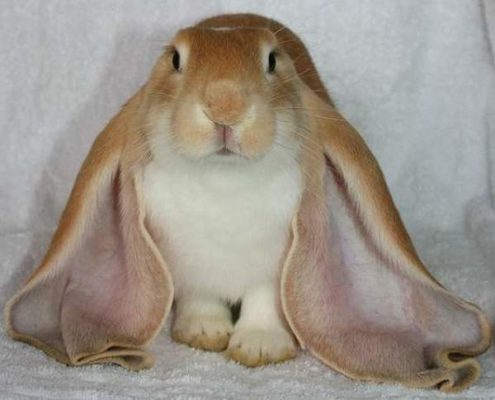

Lop-eared rabbits of breed English ram
A beginner should not have such a rabbit, as he needs a lot of attention and competent care. Without this, the animal quickly begins to run wild and becomes shy, despite the fact that, with proper content, it is very sociable and friendly.
French
The French ram rabbits are large up to 8 kg, which makes them commercially in demand. The rate of gain in live weight is high, so their breeding for meat is especially profitable. Due to their large size, animals must be kept in spacious cages to allow full movement.
Corduroy
A dwarf variety of ram rabbits, bred in the 2000s. The exact standard of the species has not yet been established, as the breed continues to be refined and improved. The weight of the animals ranges from 2 to 3 kg.
Dutch
The smallest rabbits of the sheep breed, weighing only 1.3 -1.8 kg. In Western countries, the species is very popular and is actively bred as a pet. The nature of the pets is quiet, friendly and inquisitive. Animals have a variety of colors.
Dwarf
Small animals weighing up to 2 kg with a pleasant character. They are very affectionate towards their master. When buying, it is not recommended to choose rabbits heavier than 2 kg and lighter than 1 kg. Raising animals with the right approach is not difficult.
Meissen
The weight of the animals is from 3 to 5 kg. Their coat is dense and shiny. The ears are thick, densely pubescent, which creates a crown on the head. The breed is rare and in Germany is under special protection to prevent its extinction. Breeding it is now aimed at restoring the species.
Characteristics and appearance
Due to the particular popularity of French sheep breeding, the characteristics of the breed are dedicated to them. These mammals are impressive in size. They gain from 4 to 11 kg in weight. The body length ranges from 50 to 70 cm. The paws are athletic and powerful. The chest is wide, slightly sunken. The back is sagging, semicircular. However, the first thing people pay attention to when stroking these pets is the protruding chubby cheeks.
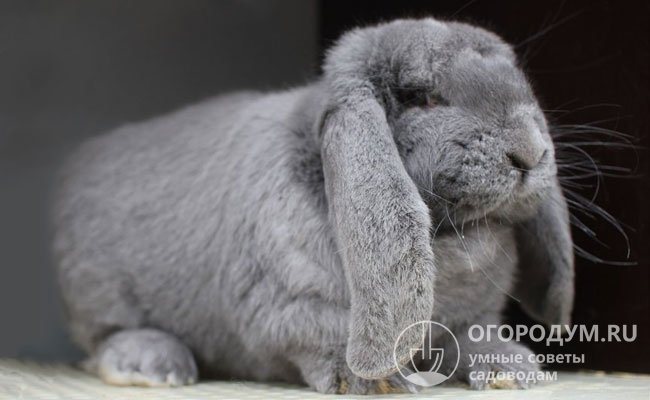

The French ram rabbit possesses wealth in the form of long ears. This part of the body can reach a length of 40-55 cm.For the convenience of animals, farmers sometimes tie up their ears with rubber bands. Before the rabbit is 40-50 days old, his ears are standing or spaced in different directions, like ordinary representatives of the Zaitsev family.
Rabbit fur of the breed is striking in a variety of colors. The following coat colors are allowed:
- Blue;
- Motley patterned;
- Light - and dark gray;
- Chocolate;
- Snow white;
- Oil colors, etc.
The coat consists of a thick, delicate coat with an undercoat.
Important! It is believed that representatives of the entire breed group are calm, phlegmatic and peaceful animals. The main reason here is the long ears, which completely cover the auricle. Because of this, the functionality of the organ of hearing is impaired. Mammals practically do not hear. This protects them from the fright that ordinary rabbits have from loud noises.
Females and males
There are several ways to distinguish animals by gender. But the signs are relevant only for individuals who are already 1.5 months old. The rabbits of a ram practically do not differ in gender.
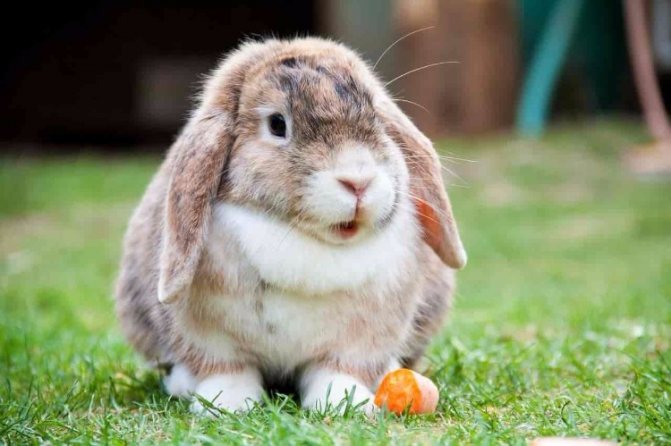

The rabbits of a ram practically do not differ in gender.
- On the reproductive organs that are under the tails of animals.
- Males have large heads. Their bones are wide and heavy.
- Females appear larger, rounder and more proportional. Their head is small, slightly elongated.
- Males move heavily, angularly and slightly clumsy.
- Females jump and move smoothly, gracefully.
Fertility
The disadvantage of the breed is the lack of high fertility. One rabbit brings 3-6 cubs. Sexual maturity in males occurs at 5 months, in females at 8-9 months.
| Parameter | Characteristic |
| Animal | Rabbits (Oryctolagus cuniculus L) |
| Breed | French ram |
| Productive type | Meat, decorative |
| Live weight of adults | Average 5 kg |
| Torso length | 60-70 cm |
| Ear length | Up to 50 cm (width 10-17 cm) |
| Suit | Various colors are allowed - white, blue, golden-red, gray, black, combined two-color (for example, havana) |
| Length of wool | About 3 cm |
| Puberty age | 5-6 months (males), 8-9 months (females) |
| Plurality | On average, 5-8 rabbits per litter (up to 12) |
| Average slaughter age | 4 months |
| Slaughter exit | 59-60%, of which meat 87-90% |
| The quality of the hide | Good (large size) |
| Disease resistance | Relatively weak immunity, susceptible to diseases of the digestive system |
| Registration in the State Register of the Russian Federation | Breed not included |
We suggest that you familiarize yourself with: Black grouse - kosach, or forest rooster
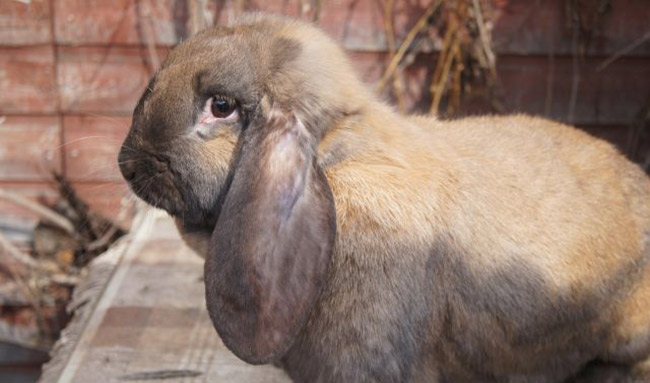

Representatives of the species, which are kept as pets, can rightfully be considered centenarians - with adequate care, they can live for more than 9 years. Experienced rabbit breeders are of the opinion that the French ram is a friendly and peaceful animal, rarely showing aggression. These animals have a certain intelligence, so they can be trained well.
This subspecies of rabbits is called "rams" due to some external similarity. The animals have a round muzzle, a convex forehead, a humped nose, and their cheeks are voluminous, protruding to the sides. The body of the French is rather large (60-70 cm in length), the chest is sunken. The paws of animals are short, but large and strong. The back is elongated and visually sags slightly.
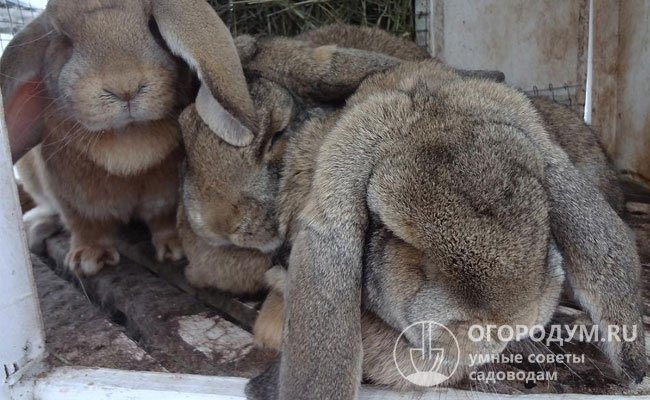

A distinctive feature of the breed - large drooping ears
Based on the name "lop-eared ram", it is easy to guess that the peculiarity of the French - large hanging ears. Their width varies from 10 to 17 cm, and the length can be up to 50 cm. Representatives of the species are hard of hearing, since their ears are distinguished by an unusual structure - malformed auricles.
The coat is smooth and soft, its length is about 3 cm. Note that French folds can boast of an abundance of different colors.There are individuals with white, black, gray, blue fur. Also, the suit can be variegated or spotted.
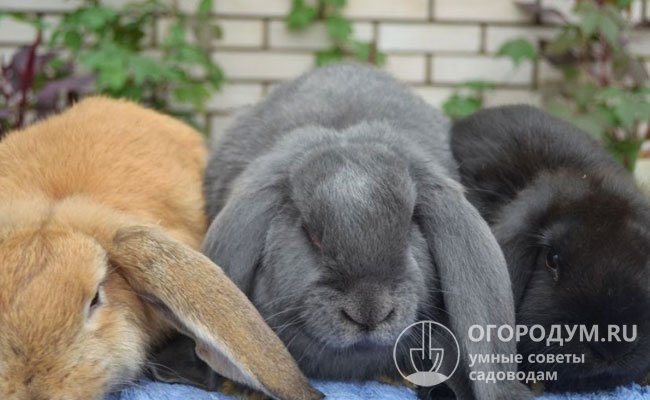

In the photo - rabbits of different colors. Breed standards imply not only monochromatic colors, but also combined (variegated or spotted)
Currently, French sheep have become more often bred for economic purposes as a breed of meat direction. Slaughtering an animal at the age of 3-4 months, the farmer receives several kilograms of dietary meat and high quality skin.
Maintenance and care rules
The structure of the ears of rabbits ram should be taken into account when keeping animals. Crowding is unacceptable in the cells. Juveniles are housed separately from adults. It is also not advisable to keep males with females together. The cells must be disinfected regularly. When raising rabbits for meat, it is recommended to slaughter them in 3 months.
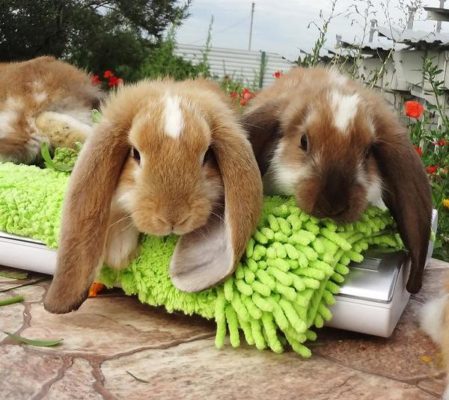

Baran rabbits love freedom - they need a spacious room for life
Mesh floors are not suitable for animals, and they need to make a plastic or wooden bottom in the cages. The bedding is needed 15 cm deep. It is optimal to use sawdust. It is required to provide the animals with a small house in which they can hide. Do not place the cage in direct sunlight or near heat sources, this will cause overheating in rabbits and a sharp deterioration in the condition.
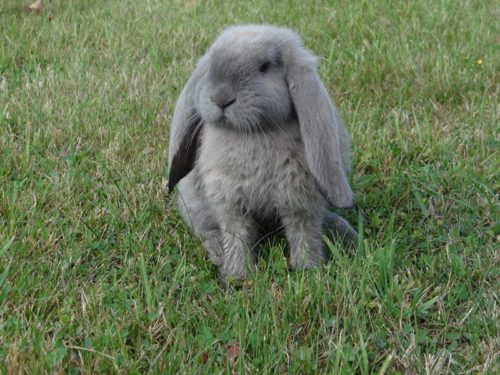

Like other breeds of rabbits, walking is useful for them.
Vaccinations are necessary for animals, since they easily get viral infections, the treatment of which is expensive, and in some cases even impossible. This applies to both decorative and meat types.
Rabbit keeping
Ram rabbit cages should be spacious so that the animals do not step on their ears. This is especially true for large varieties such as French, German or English. The floor in the cage is lined with shavings or sawdust. It is undesirable to keep rabbits on a net or on a pallet with cells, they are prone to pododermatitis. The depth of the pallet should be at least 15 cm so that the eared animals can freely dig their own burrows.
Decorative ram rabbits can be kept in an aviary. Its area should be at least one square meter. The aviary is installed in the shaded part of the apartment, away from windows and heating appliances. These animals are sensitive to drafts and cold. If the cages are outside, they need to be additionally heated in winter. It is also undesirable to expose the house in direct sunlight.
The cells should be cleaned at least once a week. Animals need to regularly examine their ears, remove dirt. Lop-eared rabbits are resistant to many diseases. Ornamental breeds live 10-12 years if the maintenance and feeding is correct. The meat rabbits are sent for slaughter earlier. To protect against infections, rabbits should be vaccinated on time.
Feeding
The nutrition of rabbits, rams must be complete, therefore it includes:
- Seasonal grass;
- Cereal crops;
- Vegetables;
- Fruits;
- Branches cut from fruit trees;
- Compound feed;
- Hay.
All feed must be clean and of good quality. It is strictly forbidden to give rabbits cabbage, beans and salad. Water in drinking bowls is not needed boiled, since the characteristics of its mineral composition are more suitable for animals.
Reviews about rabbits Dwarf ram
★★★★★
Inna, 31 years old, model, Moscow. I never thought that my pet would be a rabbit. When I saw this little miracle, I could not help but fall in love with it. Among the main advantages, I can single out his charm, easy learning and the ability to walk.
★★★★★
Valery, 54 years old, manager, Chelyabinsk. A little differently, I imagined the life of a rabbit in my house. It requires a fairly thorough care.I also noticed that during puberty, rabbits of this breed can be aggressive.
★★★★★
Olga, 23 years old, accountant, Peter. I want to warn about the irrepressible craving of these cute creatures for sabotage - it is mainly the wires that suffer. The absence of unpleasant odors from the rabbit is its indisputable advantage.
Hide
Add your review
Keeping rabbits of decorative breeds requires attention and responsibility. Representatives of the "Dwarf Sheep" breed are one of the most unpretentious rabbits in keeping, popular all over the world. These animals are very smart, easy to learn, and give a lot of positive emotions to their owners.
0
Video: "French Sheep". Acquaintance with breeding rabbit breeding.
Due to the affectionate nature, most of the rams, even those bought for meat, remain pets, who are ready to sit on their knees for hours or accompany the owner on the backyard.
The ram is a popular decorative breed of meat-type rabbits. The animals are distinguished not only by high rates of productivity, but also by the simplicity of maintenance and docile disposition, which allows them to be bred as pets. From the article you will learn about the varieties of the breed, its advantages and disadvantages, as well as the intricacies of caring for decorative individuals.
How to choose a good rabbit
A worthy ram, suitable for further breeding, should not be suckling, that is, drink mother's milk. The optimal age for buying is 1.5-7 months. The coat should shine. The presence of adhering dirt is not allowed on it. It is not worth buying a thin individual. The composition of the body should be harmonious, without protruding bones, clubfoot. The head of a healthy animal is usually erect, with the ears hanging.
Rabbit butterfly
A suitable individual looks calm. The behavior of a sick animal is nervous, it jumps, turns its head, itches. The presence of injuries, baldness, caked blood on the face is unacceptable. The nose must be dry. Wet - indicates a cold, infection, or allergy. If the eyes are watery, or pus is visible, it means that the representative of the Zaitsev family has some kind of infection. Pus or scabs in the ears are also reported health problems.
Additional Information. The breed is kept by farmers not only in order to get dietary meat, but also for sale. Lop-eared rabbits are in demand among lovers of domestic animals. The cost of one animal ranges from 700 to 2000 rubles. The price depends on the exterior and characteristics of the baby's parents.
History of the breed
This breed was developed in England in the 1850s. The ancestors of the Rams are the wild rabbits of Western Europe and the Mediterranean. Breeders, trying to breed a new breed, received an unusual mutation - hanging ears in experimental animals. Scientists liked this feature so much that they decided to fix it at the genetic level, as a result of which a new breed of fold-eared rabbits was obtained.
The rodents got their name because of the unusual shape of the head and the pronounced hump on the nose, which makes them look like rams. Rabbits quickly began to gain popularity, and after a while several more subspecies of an unusual breed appeared.
In Europe, sheep are bred both in large farms and in small private farmsteads. In Russia, this breed appeared not so long ago, but its popularity is growing every year.
Description
The rams are easily recognizable by their characteristic hump on the nose and drooping ears. In some individuals, ears can reach a length of more than half a meter, so for convenience they have to be pinched with special clips. Distinctive features of Baranov are also considered to be a wide forehead and rounded thick cheeks. Their eyes are large, expressive.
Hanging ears give rabbits of the Ram breed a special charm and cute appearance.However, such a structure of the auricles makes the animals less susceptible to the sounds of the environment, so they are not afraid of rustles and may be late to notice the impending danger.
Rabbits have impressive muscle mass, they are well developed physically. The average weight of an adult rodent reaches 4-5 kg, but individuals weighing more than 10 kg are also found. They have a thick, long and soft coat. The most common animals are black, blue, red and brick colors.
Sheep have a peaceful disposition, they easily get along with any other inhabitants of the farm. They are easy to train, recognize the owner, love to contact him. With proper care, rabbits live on average about 10 years.
Standards and marriage
The sheep breed of rabbits includes many subspecies, which differ in both the size of the individuals and their external data. Each such subspecies has its own clearly established standards. But there are some common features for all Sheep:
- large head with a wide forehead;
- long drooping ears;
- crook in the nose;
- round cheeks;
- massive body;
- early maturity;
- thick coat.
Individuals with a narrow chest, poorly developed muscles are considered to be a marriage of the breed. In purebred rabbits, ears are already at the age of 2-3 months. They should not be too close to the head or stick out. Short (less than 24 cm) or narrow ears are also considered a fault.
Breeding secrets
Experienced rabbit breeders know the secrets of raising sheep rabbits, for example:
- Reproduction is allowed only when individuals reach maturity. Females are allowed to mate from 8, 9 months of age, males - from 5, 6 months.
- Individuals of different breeds cannot be mixed. The offspring after such experiments is born with defects in appearance.
- Only the most ideal individuals are suitable for mating.
- Obesity animals should not be allowed to mate. Lop-eared rams whose weight does not exceed 5 kg can become parents.
- The process is organized on the territory of the male. A rabbit is placed in his pen.
- Females are allowed to mate selectively. Only young animals, which are from 9 months to 3 years old, can give birth to healthy offspring. After the age of three, the female is prohibited from giving birth. Childbirth can cause the death of the animal and its offspring.
Sheep subspecies and their features
At the moment, there are several varieties of the breed. Some of them are grown by farmers for dietary meat, while others are exclusively for decorative purposes.
Breeders tried to breed universal hardy subspecies that will feel comfortable in various climatic conditions. They fully succeeded in this, since Baranov can be found both in Europe and in the countries of America and Asia.
French
The hybrid is characterized by a rapid set of muscle mass and can reach a weight of 8 kg. Due to its large size, this subspecies is not suitable for cell maintenance. Thanks to their friendly and docile nature, French Rams are most often brought up as pets, giving them spacious enclosures.
The body of the eared is stocky, the legs are strong, short. With age, this species is prone to the formation of a "skirt" - a skin-fatty fold in the lower part of the body. In purebred individuals, the ears do not have creases and hang down below the chin by at least 4 cm. The fur of French Rams is not too long, but thick and soft.
Corduroy (plush)
Decorative corduroy rabbits are a fairly new breed that does not yet have clear standards. The average weight of adults does not exceed 3 kg. The body type is semi-arched, the body tapers evenly from the tail to the shoulders. The back of the breed is wide, the chest is rounded.
Corduroy Rams have short front legs, which makes them somewhat stumpy. The ears fall freely, the minimum length is 35 cm. The main feature of the subspecies is thick plush fur. The length of the fibers is about 1.6 cm.
English
This variety was one of the first to be bred, and it is the English Sheep that are the ancestors of most of the currently widespread subspecies.
Rabbits are distinguished by long (about 60 cm) and wide ears, which can almost completely cover the body of a rodent. English Sheep are classified as large breeds, since the average weight of adults reaches 5 kg.
The head of rodents is large, with a hump-nosed profile, the neck is poorly expressed. The front legs are short, the back of the body is rounded.
Unlike other varieties, English Rams do not have cartilage on the back of the head, moreover, its presence is considered a marriage of the breed.
Dutch
The Dutch Sheep is one of the smallest fold-eared rabbit breeds. The weight of adult rodents ranges from 900 g to 1.8 kg. The physique is compact, the muscles are well developed, the length of the body to the size of the head is in a ratio of 2: 1. The ears of the Dutch hang down no more than 2.5 cm below the chin, rounded at the ends.
The fur has a dense uniform structure, glossy. The most common color is tortie, but in specialized nurseries you can find Dutch Sheep in a wide variety of colors.
Meissen
Meissen rabbits were bred in the late 19th century in the city of Meissen, Germany. They are distinguished by their thick, shiny fur of various shades with "silver plating". This effect is given by the white tips on the hairs that appear in rodents after 2 molt. The main colors of the Meissen breed are:
The weight of rabbits usually does not exceed 5.5 kg, therefore they are considered to be of medium height. The body is oblong, muscular. Meissen Rams are compact, the underside and chest are of the same width.
Nappy
The fluffiest representatives of the Lop-eared Sheep family are fleecy rabbits. Their fur is soft and thick, the length of the hairs can be more than 5 cm. About 20 shades of fur are officially recognized, but breeders can find fleecy rabbits of any possible color.
The ancestors of the breed are the Dutch fold-eared rabbits, from which the fleecy Rams inherited a shortened muzzle and a compact, square body. The weight of the animals ranges from 1.6 kg to 1.8. They are bred for decorative purposes, they require special conditions of detention and constant care for long fur.
German rabbits
This variety of lop-eared rabbits was bred in Germany in the middle of the 20th century. German Sheep weigh from 2.9 to 4 kg and are one of the most popular breeds in the middle category. The body is compact, stocky. The head is large, round, the neck is short. The front feet are small and strong.
The average length of the ears is 35 cm. There is a specific cartilage on the head, which breeders call the "crown". The coat is of medium length, soft, with a dense undercoat. Due to the frequent molting, rabbit fur requires regular combing.
Lop-eared rabbits: a brief history and features
Decorative and meat variations of ram-rabbits were bred from wild rodents inhabiting the Mediterranean and Western Europe - the first representatives of the "ram" breed were bred in the 19th century in England. Initially, hanging ears, so characteristic of these animals, were considered a gene mutation, and it was the British breeders who decided to strengthen and consolidate this trait. So a separate breed appeared with a charming feature - large, soft ears lying on the cheeks.
Some representatives of such animals can boast ears, the length of which is up to 70 centimeters (with the width of the auricle being 15-17 centimeters). Actually, it was the unusual ears that became the reason for the spread of the breed around the world - many breeders wanted to become the owners of such cute individuals.
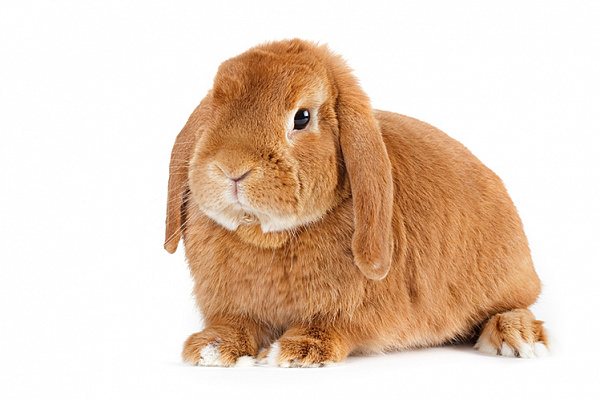

The ear cartilage of "rams" is soft and does not support the weight of the ears
Otherwise, ram rabbits are not too different from other rabbits, especially meat.So, these are rather massive and dense rodents with a large, strong head and a wide chest. On average, the weight of a "classic" ram-rabbit is about 4 kilograms, but there are also more meaty individuals gaining 8-10 kilograms of weight. However, there are also dwarf "lambs", barely reaching a mass per kilogram.
The body of a standard "ram" is 60-70 centimeters long. Average weight and average size allow female "rams" to bring five to seven cubs in one round (note that in comparison with other rabbits this is a low indicator of productivity).
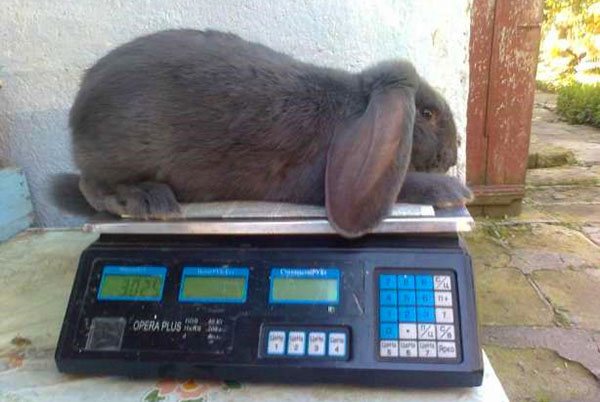

Two month old rabbit ram on the scales
Price for kitchen electronic scales
Kitchen electronic scales with a bowl
All "rams", regardless of the subspecies, are distinguished by a very docile and peaceful character. It's funny, but experts associate this feature of rabbit temperament with their ears - because of the closed type of auricle, "rams" hear a little worse, and therefore are not afraid of sharp noises and sounds.
Balanced ram rabbits can be wonderful pets - they are distinguished by a good level of intelligence, the animals become attached to humans and are even able to learn some commands (for example, react to a nickname). If the "lamb" is brought up from childhood, he will be tame, he will be happy to sit on his knees, to receive affection.
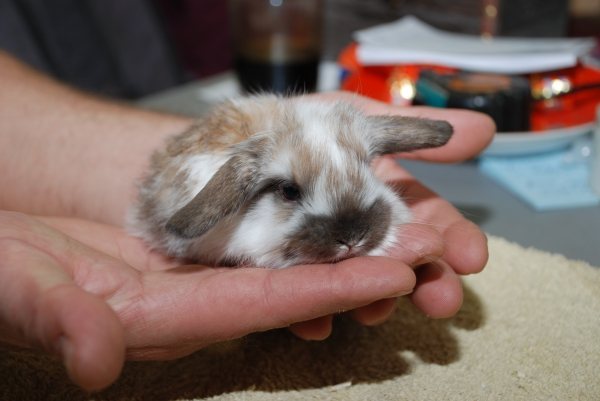

Rabbits, growing from an early age with a person, quickly become tame
Pet care and maintenance
Keeping a lop-eared rabbit at home requires a serious approach and certain knowledge. It is advisable to purchase all the necessary equipment in advance before a new pet appears in the house. You will need:
- cell;
- drinker and food bowl;
- special brush for wool;
- feed;
- toilet tray;
- house;
- leash for walking;
- toys.
How to make a drinker with your own hands, read here.
It is also important to determine a suitable place in the house where the cage will be placed. Sheep do not tolerate direct sunlight and heat, as well as drafts. Try to carve out a space near the opposite wall from the window, away from the batteries. Lop-eared rabbits feel most comfortable at temperatures from +18 to +20 degrees.
Advantages and disadvantages of the breed and its breeding
The main advantage of the breed is its high early maturity. It is profitable to breed sheep for dietary meat. In addition, you can earn additional income by donating high quality pelts. How to properly dress the skin at home, you will learn in this article.
Other advantages of the breed include:
- pretty appearance;
- variety of colors;
- friendly disposition;
- unpretentiousness in food;
- ability to train;
- stress tolerance.
However, this breed also has its disadvantages:
- small offspring;
- tendency to gluttony;
- weak immunity;
- exactingness to the conditions of detention.
The video below provides an overview of the color varieties of rabbits of the "Baran" breed:
Breeding fold rabbits
Sheep rabbits for breeding at home are not the easiest breed. If you cross an ordinary animal, with erect ears, with a lop-eared one, you get a not very beautiful hybrid. Such a crawl will have so-called helicopter ears, not fully drooping and not fully erect. Therefore, the mating of rabbits is allowed exclusively within their own breed.
Puberty in males and females occurs at 6-7 months, from this age they begin to be used for reproduction. For mating, the female should be placed next to the male. It is very important to ensure that animals do not become obese, their sexual instinct falls from excess weight. Pregnancy lasts about 30 days. Rabbits give birth from 3 to 10 rabbits. Dwarf breeds - 3-4 bunnies. Up to 20 days, the rabbit must feed the babies with milk. Then they are gradually transferred to adult feed.Special care for the rabbits is not needed, the females are excellent mothers, and the cubs have a high survival rate.
How much do rabbits cost? The price of animals of this breed is from 400 to 700 rubles per individual. Most often they sell the French breed. It has not only decorative, but also economic value. After all, the "French" weigh up to 8 kg, their fur and skins are of excellent quality. Other subspecies are more difficult to find and may be more expensive. It is important to remember that the ears of rams begin to droop after 6 weeks, fully formed by two months. Therefore, you should not buy rabbits at an earlier age, so as not to accidentally acquire a hybrid or another species.
Care and cage maintenance on farms
On farms, rabbits are usually kept in spacious cages. It is advisable to purchase options with a wooden or plastic floor so that rodents do not freeze their paws in the cold season. In regions with cold winters, it is preferable to choose a portable type structure in order to move pets indoors if necessary.
Usually the cages are installed in 2-3 tiers. Young animals are kept separately, and adults are divided into producers, pregnant and lactating females.
It is recommended to use sawdust or paper as bedding in the cage. In addition to feeders and drinkers, each cage is equipped with a small house so that shy rodents have somewhere to hide, and the rabbits can breed offspring away from prying eyes.
Content principles
Sheep are demanding on hygienic conditions and do not tolerate crowding well. It is better to choose a place for placing cages behind tall buildings that will protect rabbits from drafts and the scorching sun. The optimum temperature for outdoor maintenance is +25 degrees, but not more than +30.
In closed rabbitries, good ventilation should be organized, since the high accumulation of ammonia, carbon dioxide and dust in the air can greatly harm the health of pets. Cages should be cleaned at least 2 times a week. Once every couple of months, all equipment and housing must be treated with disinfectants.
Conditions
Sheep do not tolerate sharp temperature fluctuations and high humidity. It is best for rodents to gain weight in conditions of outdoor cages. If, for some reason, the rabbitry can only be located indoors, it is recommended to install windows so that the Rams can get enough light during the day.
The landing rate for 1 individual is 0.5 sq. m, but the lower the density, the higher the weight gain. A more budgetary option is aviary content. Rabbits will be able to move freely and live in close to natural conditions. You just need to make sure that the pets do not dig in and do not go out of the fenced area.
Livestock feeding
Sheep have a good appetite and can overeat, so you should strictly adhere to the feeding regimen. Hay and green branches should be in cages without restrictions, as this is the main food of rodents. Due to the weak digestive system, vegetables and fruits are given in limited quantities.
Ready pelleted food is offered twice a day, at the rate of 40 g per kg of body weight of the rodent. From cereals, sheep are fed wheat and oats. Fruit is given once a week. These can be bananas, apples, or pears.
Winter content
In regions with a cold climate, cages with rabbits for the winter are removed in a closed insulated room with a temperature of 12-18 degrees. Make sure that the air humidity does not exceed 75%, otherwise install a heater. The room must be constantly ventilated and cleaned.
If the temperature in winter does not drop below -25 degrees, then you can do with the insulation of the cage. For this, boards are laid on the floor and covered with a thick layer of hay. The ceiling and mesh walls are covered with chipboard sheets, leaving holes for ventilation.In the cold season, rabbits need a high-calorie diet with a lot of vitamins and minerals.
Diseases and vaccinations
In order for rabbits to gain weight well, produce quality fur and be healthy, they need regular care and attention. The best prevention of rodent disease is to regularly sanitize cages and disinfect equipment. However, even with good care, rabbits may experience symptoms of various ailments. The table below will help you identify the problem and take action.
The main diseases and methods of their treatment:
| Name | Symptoms | Treatment |
| Pododermatitis | Hematomas and cracks in the soles of the paws, lack of appetite, marking time. | Treatment of wounds with 10% zinc ointment, the imposition of sterile bandages on the paws. |
| Invasive coccidiosis | Lack of appetite, weakness, diarrhea, bloating. | Reception of Sulfadimethoxin, Norsulfazole, drinking with iodine solution 0.2%. |
| Myxomatosis | The appearance of point tumors in the head, genitals, inflammation of the mucous membranes of the eyes. | There is no cure. Isolation and slaughter of a sick rabbit, burning of a carcass. The veterinary service should be notified. |
| Hemorrhagic disease | Fever, shortness of breath, spasms, bleeding from the nose, mouth, anus. | There is no cure. |
| Pasteurellosis | Fever, rapid breathing, refusal to eat, conjunctivitis, nasal discharge. | Antibiotic therapy is carried out with Terramycin, Biomycin. |
| Infectious stomatitis | Plaque on the tongue, increased salivation, lethargy, inflammation of the skin on the lower jaw. | Treatment of the oral cavity with a 2% solution of copper sulfate, Streptocid. |
Vaccination is the only way to prevent dangerous diseases in rabbits. Basic vaccinations are given for myxomatosis and hemorrhagic disease. This can be done both with individual vaccines and with a complex one. The first vaccination is given at the age of 45 days, revaccination - once a year.
Feeding rabbits
Proper feeding of rabbits is no less important factor in the health of animals than care and maintenance. There are no special requirements for the diet, the same feeds are suitable for lop-eared rabbits as for ordinary ones. The menu includes:
- Fresh green grass
- Concentrates - wheat, barley grains, rye, oats
- Vegetables - carrots, boiled potatoes, cabbage leaves, zucchini, cucumbers
- Fruit - seedless apples, pears, bananas
- Hay in the cold season
- Rowan, maple, oak, willow, apple, pine, Christmas tree twigs
There should always be fresh water in the cage. Don't forget about mineral supplements. Rabbits are given chalk, salt stone or special ready-made complexes. If necessary, vitamins are included in the diet. They are necessary, first of all, for females and young rabbits. It is also worth feeding the animals with vitamins in late winter and spring.

